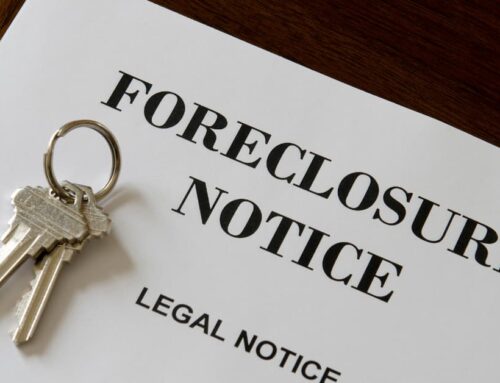To put a lien on a property in Texas, you must gather essential project and property information, send pre-lien notices if you’re a subcontractor, prepare and file a notarized mechanic’s lien affidavit with the county clerk where the property is located, and mail copies to the property owner and general contractor within 5 business days of filing. The entire process must be completed within strict deadlines, typically by the 15th day of the 3rd or 4th month after your last work, depending on whether it’s a residential or commercial project and your role as contractor or subcontractor.
But here’s what most contractors don’t know: A single missed deadline, incorrect property description, or failure to send proper notices can completely invalidate your lien and cost you thousands in unpaid bills. Texas lien law includes dozens of technical requirements, homestead property exceptions, and specific procedural steps that must be followed exactly. For complex situations or large amounts, consulting with an experienced Texas real estate attorney can help ensure proper compliance and maximize your recovery chances. This comprehensive guide reveals every critical detail you need to successfully file a lien in Texas, avoid the costly mistakes that destroy 40% of lien attempts, and secure the payment you’ve earned.
Key Insights
- Deadlines vary by role and project type – General contractors get 3-4 months, subcontractors face tighter windows, and pre-lien notices must be sent 30 days before filing
- Property descriptions must be legally precise – Street addresses from contracts aren’t enough; you need the official legal description from county records
- Homestead properties require special contracts – Working on someone’s primary residence without proper written agreements signed by both spouses destroys your lien rights
- The 5-business-day notice rule kills many liens – After filing, you have exactly 5 business days (not calendar days) to notify property owners, or your lien becomes worthless
- Filing costs range from $50-$200 for DIY to $500-$1,500 with professional help – but these costs are usually recoverable if you collect successfully
- About 60% of properly filed liens result in quick payment – the public record creates immediate pressure for property owners to resolve the debt
What Is a Property Lien in Texas?
A property lien in Texas is a legal claim against real estate that secures payment for unpaid debts. Once filed, the lien prevents the property owner from selling, refinancing, or transferring the property until your debt is resolved. This creates immediate pressure for payment and transforms your unsecured debt into a secured claim backed by the property’s value.
In the construction industry, this legal tool is called a mechanic’s lien, and it’s specifically designed to protect contractors, subcontractors, suppliers, and laborers who have improved a property but haven’t been paid.
Why Construction Liens Matter in Texas
The construction industry lost $208 billion to late and non-payment in 2022 alone. Texas law recognizes this problem and provides strong protections for construction professionals through comprehensive lien rights. When properly filed, your lien can:
- Force payment before property transfers
- Provide legal grounds for foreclosure proceedings
- Secure your debt with the property’s value
- Create negotiating leverage for settlement discussions
Who Can File a Lien on Property in Texas
Not everyone who works on a construction project can file a lien. Texas Property Code Chapter 53 protects specific parties who actually improve the property’s value through their work or materials:
Eligible Parties:
- General contractors
- Subcontractors at any tier
- Material suppliers
- Equipment rental companies
- Architects and engineers
- Laborers and workers
The Key Requirement: You must have provided labor, materials, or services that directly improved the property under either a contract with the owner or through the contractual chain. For example, a plumber installing new pipes can file a lien, but a delivery driver who simply dropped off materials at the job site cannot.
Critical Distinction: Simply being owed money doesn’t automatically grant lien rights. You need to prove two things: that your work or materials enhanced the property’s value, and that you have a legitimate place in the contractual chain connecting you to the project. Many contractors lose their lien rights by assuming any unpaid bill qualifies when Texas law requires actual property improvement.
Types of Property Liens in Texas
While this guide focuses on mechanic’s liens for construction professionals, understanding the different types of property liens in Texas helps you recognize your options and avoid conflicts with other creditors. Here are the four main types you might encounter:
1. Mechanic’s Liens (Construction Liens)
Your primary weapon against non-payment. These liens protect contractors, subcontractors, suppliers, and laborers who improved a property but haven’t been paid. Once filed, they prevent property sales or refinancing until you’re paid, making them incredibly effective for collection. Most property owners resolve mechanic’s liens quickly to clear their title.
2. Judgment Liens
Your backup plan when mechanic’s liens aren’t available. If you missed the deadline to file a mechanic’s lien or your work doesn’t qualify for lien protection, you can sue for payment and convert any court judgment into a lien against the debtor’s real estate. These liens last 10 years and can attach to any property the debtor owns in that county.
3. Tax Liens
The liens that beat everyone else. Government entities file these for unpaid property taxes, income taxes, or other tax debts. Important for contractors: Tax liens typically get paid first, even before your mechanic’s lien, so check for existing tax issues before starting major projects.
4. Consensual Liens (Mortgages)
Voluntary liens that can complicate your collection. These include mortgages, home equity loans, and other agreements where property owners voluntarily pledge their property as collateral. While you can’t file these yourself, understanding mortgage liens helps you assess whether there’s enough property value to satisfy your claim.
Required Information for Filing a Mechanic’s Lien in Texas
Gathering the right information before filing prevents costly delays and rejected liens. Missing or incorrect details are the top reasons liens get thrown out of court. Here’s everything you need to collect, organized by category:
Property Information:
- Property owner’s full legal name and mailing address (exactly as shown on the deed, not just “John Smith” if the deed says “John Michael Smith”)
- Complete property address including county (the county determines where you file)
- Legal property description (get this from county property records, not Google Maps – street addresses aren’t enough)
- Property type: residential homestead vs. commercial (homestead properties have special requirements that can void your lien)
Project Details:
- Original contract or work order (verbal agreements work but are harder to prove)
- Project start and completion dates (your deadlines are calculated from these dates)
- Monthly breakdown of work performed and amounts owed (required for the affidavit)
- General contractor’s name and address (subcontractors need this for proper notices)
- Names and addresses of all subcontractors above you in the chain (you must notify everyone in the payment hierarchy)
Financial Records:
- Detailed invoices for all unpaid work (generic “labor charges” won’t hold up in disputes)
- Payment records showing what’s been paid (proves the exact amount still owed)
- Change orders or additional work agreements (often forgotten but legally required if work exceeded original scope)
- Correspondence about the unpaid debt (emails, texts, or letters showing you demanded payment)
Pro Tip: Start gathering this information at the beginning of every project, not when payment problems arise. Contractors who maintain organized project files recover payment 3x faster than those scrambling to find documents after the fact.
Special Requirements for Texas Homestead Properties
When the property serves as the owner’s primary residence (homestead), additional protections apply:
Mandatory Requirements:
- Written contract between general contractor and homeowner
- Contract must be signed before work begins
- If owner is married, both spouses must sign (regardless of whose name is on the title)
- Contract should be filed with the county clerk
- All constitutional homestead requirements must be met
Failure to meet homestead requirements can completely invalidate your lien rights.
Step-by-Step Process: How to Put a Lien on Property in Texas
Filing a lien might seem intimidating, but it’s actually straightforward when you follow the right sequence. Here’s the proven step-by-step process that gets results:
Step 1: Send Pre-Lien Notice (If Required)
This warning shot alerts the property owner and general contractor that you’re missing payment and intend to file a lien. Not everyone needs to send this notice, but if you’re required to and skip it, you lose your lien rights completely.
Who Must Send Pre-Lien Notice:
- Subcontractors without direct contracts with property owners
- Suppliers providing materials to subcontractors
- Lower-tier subcontractors
What to Include in Your Pre-Lien Notice:
- Your name, address, and role on the project
- Clear description of work performed or materials supplied
- Exact amount owed
- Statement: “If payment is not received, we intend to file a mechanic’s lien against this property”
How to Send It: Use certified mail with return receipt requested. Regular mail won’t protect your lien rights if challenged in court.
Critical Timing: Send no later than the 15th day of the month before your lien filing deadline. Miss this date and you lose your lien rights entirely.
Real Example: If you’re a subcontractor whose lien filing deadline is May 15th, your pre-lien notice must be mailed by April 15th.
Step 2: Prepare the Mechanic’s Lien Affidavit
This is your official legal document that establishes your claim against the property. Think of it as your sworn statement demanding payment that becomes part of the permanent public record.
Required Information:
- Your name, address, and role on the project
- Property owner’s name and address
- Property’s legal description (critical – get this from county property records, not your contract)
- General contractor’s information (if you’re a subcontractor)
- Detailed description of your work or materials
- Total amount owed with monthly breakdown
- Exact dates when work was performed
- Sworn statement that everything is true and correct
Common Mistake to Avoid: Using the street address instead of the legal property description will invalidate your entire lien. Take the extra step to get the official legal description from county records.
Step 3: File with County Clerk
Now you’ll make your lien official by filing it with the government. This step transforms your private dispute into a public legal claim that appears on the property’s title and prevents the owner from selling or refinancing.
Filing Requirements:
- Visit the county clerk’s office where the property is located (you can’t file in a different county)
- Bring your notarized lien affidavit
- Pay filing fees: $35-$75 in smaller counties, up to $150 in major metropolitan areas
- Request certified copies for your records
What Happens Immediately: Your lien becomes public record the moment it’s filed, creating a “cloud” on the property’s title that prevents sales or refinancing until you’re paid.
Pro Tip: Some counties now offer online filing, but call ahead to confirm requirements and avoid wasted trips.
Step 4: Provide Notice to Property Owner and General Contractor
This is where many contractors lose their lien rights by missing the deadline or using improper delivery methods.
Critical Deadline: You have exactly 5 business days after filing to mail copies to:
- Property owner at their last known address
- General contractor (if you’re a subcontractor)
Notice Requirements:
- Send by certified mail with return receipt requested
- Include a copy of your filed lien (signed copy is acceptable, doesn’t need county clerk stamps)
- Keep all mailing receipts and return receipts as proof
Why This Matters: Property owners often claim they never received notice to try invalidating liens. Certified mail with return receipts provides legal proof of delivery.
Final Warning: Failure to provide proper notice within 5 business days will completely void your lien, regardless of how perfectly you completed the other steps. Set a calendar reminder immediately after filing.
Texas Lien Filing Deadlines: Critical Timing Requirements
Missing deadlines is the #1 reason liens fail in Texas. The law is unforgiving here – even being one day late can cost you thousands in unpaid bills. Here’s what you need to know about the timing that can make or break your lien:
- General contractors get more time than subcontractors, but the type of project matters too. For commercial projects, you have until the 15th day of the 4th month after your contract ends or is abandoned. Residential projects give you less time – only until the 15th day of the 3rd month after completion.
- Subcontractors face different deadlines based on when they last provided work or materials, not when the overall project finished. For commercial projects, you have until the 15th day of the 4th month after your last work. Residential subcontractors get just three months instead of four.
- Pre-lien notices add another layer of complexity. If you’re required to send one, it must go out no later than the 15th day of the month before your lien filing deadline. This means subcontractors often have just a 30-day window to send their warning notice.
Here’s a real example that shows how tight these deadlines are: Let’s say you’re a subcontractor who finished installing fixtures on January 15th for a commercial project. Your pre-lien notice must be mailed by April 15th, your lien must be filed by May 15th, and you have just 5 business days after filing to notify the property owner. Miss any of these dates and your lien is worthless.
What Happens After You File Your Lien
Once your lien hits the public records, you’ve created a legal problem that property owners can’t ignore. The lien immediately appears on title reports during property searches, which means the owner can’t sell the property or get a new mortgage until your debt is resolved.
Most property owners respond in one of four ways:
- The smart ones pay quickly to clear their title – this happens in about 60% of properly filed liens.
- Others try to negotiate payment plans or reduced settlements to make the problem go away.
- Some will challenge your lien in court, claiming procedural errors or disputing the debt itself.
- The stubborn ones delay, hoping you’ll give up or miss the one-year enforcement deadline.
Your lien gives you significant leverage, but it’s not automatic money. You have exactly one year from the filing date to either collect payment or file a foreclosure lawsuit. If you let that year expire without action, your lien becomes worthless. Many contractors make the mistake of thinking that filing the lien is the end of the process, but it’s really just the beginning of serious collection efforts.
The Real Costs of Filing a Lien in Texas
Before you start the lien process, understand what you’re investing. County filing fees range from $35 in smaller counties to $150 in major metropolitan areas like Harris or Dallas County. Add notary fees ($5-$15), certified mail costs ($5-$10 per recipient), and copies, and you’re looking at $50-$200 in direct costs for a basic filing.
If you hire professionals, expect to pay significantly more. Attorney consultations typically cost $200-$500 per hour, while full-service lien preparation and filing ranges from $500-$1,500 depending on complexity. For smaller debts under $5,000, these costs can eat up a substantial portion of your recovery.
The good news is that most lien-related costs are recoverable if you successfully collect your debt. Texas law allows you to add reasonable attorney fees and costs to your claim, making the upfront investment worthwhile for substantial unpaid amounts. Just make sure the debt is large enough to justify the time and expense involved.
Five Mistakes That Kill Texas Liens
- Property description errors destroy more liens than any other mistake. Using the street address from your contract instead of the legal property description from county records will invalidate your entire lien. Property owners’ attorneys look for this error first because it’s an easy way to throw out your claim.
- Subcontractors frequently skip required pre-lien notices, assuming they can file liens like general contractors. If you don’t have a direct contract with the property owner, you must send that warning notice or lose your lien rights completely.
- Deadline miscalculations are surprisingly common. Many contractors count from contract completion instead of their last work date, or confuse residential vs. commercial deadlines. When in doubt, use the earlier deadline to be safe.
- The 5-day notice requirement trips up even experienced contractors. You must mail copies to property owners within 5 business days of filing – not calendar days, not a week, but exactly 5 business days. Weekend and holiday delays have voided otherwise perfect liens.
- Homestead properties require special written contracts that many contractors ignore. If you’re working on someone’s primary residence and don’t have the proper contract signed by both spouses, your lien won’t be worth the paper it’s printed on.
When Property Owners Fight Back
Don’t be surprised if property owners challenge your lien – it’s a common defensive strategy. They might claim your work didn’t actually improve the property, that they already paid you, or that you made procedural errors in filing. Some will even allege you filed a fraudulent lien to intimidate you into dropping your claim.
Your best defense is meticulous documentation. Keep detailed records of all work performed, materials supplied, communications about payment, and evidence that your work enhanced the property’s value. Photographs of your work, signed change orders, and email trails demanding payment all strengthen your position.
Respond quickly to any challenges but don’t let them derail your collection efforts. Property owners often use legal challenges as delay tactics, hoping you’ll get frustrated and settle for less than you’re owed. If the dispute gets complex, consult with a Texas real estate attorney who can protect your interests while you focus on your business.
Smart Alternatives When Liens Won’t Work
Sometimes filing a lien isn’t your best option. If you’ve missed the deadline, the debt is too small to justify the costs, or you want to preserve a business relationship, consider these alternatives:
- Formal demand letters often resolve payment disputes without legal action. A well-written letter on attorney letterhead, demanding payment within 30 days and mentioning potential legal consequences, motivates many property owners to pay up quickly.
- Small claims court works well for debts under $20,000 and provides faster resolution than lien foreclosure proceedings. You can represent yourself, the filing fees are minimal, and you’ll get a hearing within a few months rather than waiting a year or more for foreclosure.
- Payment plan negotiations can salvage business relationships while ensuring you get paid. Many property owners facing cash flow problems will agree to structured payments rather than risk lien foreclosure and damaged credit.
Protecting Your Payment Rights From Day One
The best lien is the one you never have to file. Smart contractors protect their payment rights from the moment they start a project, not when payment problems arise.
Always use detailed written contracts that clearly describe the work, payment terms, and your lien rights. Include language stating that you reserve the right to file a lien for unpaid work and that the property owner will be responsible for your collection costs.
Monitor payments carefully and address problems immediately when they arise. Don’t wait until you’re owed tens of thousands to start collection efforts. Send payment reminders at 30 days, formal demand letters at 60 days, and start lien procedures by 90 days if necessary.
Document everything throughout the project. Take photos of your work, keep detailed daily logs, save all communications about the project, and get written approval for any changes or additional work. This documentation becomes crucial if you need to prove your lien claim later.
The construction industry will always have payment problems, but contractors who understand lien law and prepare properly can protect themselves and get paid for their hard work. Don’t let unpaid bills threaten your business when Texas law provides powerful tools to secure payment.
Getting Professional Help When You Need It
While this guide covers the essential steps for filing a lien in Texas, some situations require professional assistance. Large debts over $50,000 warrant attorney involvement to ensure proper handling and maximize recovery prospects. Complex projects with multiple parties, disputed work scope, or change orders often need legal expertise to navigate successfully.
Homestead properties require careful attention to constitutional requirements that can void your lien if handled incorrectly. Tight deadlines or challenging property owners also benefit from professional representation to protect your interests and avoid costly mistakes.
Don’t let unpaid bills threaten your business. Kelly Legal Group provides comprehensive assistance for contractors, subcontractors, and construction professionals seeking to protect their interests through proper lien procedures. Our experienced real estate attorneys guide you through every step, from eligibility assessment to final debt collection, ensuring compliance with Texas Property Code requirements while maximizing your recovery potential.
Contact Kelly Legal Group today for a consultation and protect your right to payment with confidence. We’ll help you navigate Texas property lien law professionally and effectively, turning your unpaid invoices into secured claims that get results.
Frequently Asked Questions About Property Liens
What is a lien on a property?
A property lien is a legal claim against real estate that secures payment for an outstanding debt or obligation. It prevents the property owner from selling, refinancing, or transferring the property until the debt is resolved. Common types include mechanic’s liens for unpaid construction work, judgment liens from court awards, and tax liens from unpaid taxes.
How to find a lien on a property?
You can find liens on a property by searching public records at the county clerk’s office where the property is located or through online property record databases. Title companies and real estate attorneys can also perform comprehensive lien searches as part of title reports. Liens appear as encumbrances on the property’s title and must be disclosed during property transactions.
How to put a lien on a property?
To put a lien on property, you must first establish legal grounds (such as unpaid construction work or a court judgment), then file the appropriate lien document with the county clerk where the property is located. The process typically involves preparing a notarized affidavit, paying filing fees, and providing proper notice to the property owner within specified deadlines. Requirements vary by lien type and state, so following exact statutory procedures is crucial.
Who can put a lien on a property?
Contractors, subcontractors, suppliers, and laborers who improved the property can file mechanic’s liens for unpaid work. Judgment creditors can place liens after winning court cases, while government entities can file tax liens for unpaid taxes. Other parties with legal standing include landlords for unpaid rent, homeowners associations for unpaid dues, and lenders for defaulted loans.
How long does it take to remove a lien from property?
Removing a lien can take anywhere from a few days to several months, depending on the method used. If the debt is paid in full, the lien holder must provide a release document that can be filed immediately with the county clerk. If the lien is disputed or requires legal action, removal can take months through court proceedings or settlement negotiations.






